
Happy Wednesday, Daily Grinders! Welcome back to Daily Grindhouse’s weekly list of what’s new and interesting in the world of Blu-Ray and DVD releases. Everything that follows is available to purchase online or in stores as of yesterday. If any of the following titles catches your eye, please click through the cover icons to buy them through us — it helps keep the lights on here (literally). Shouldn’t be hard to find something cool: There’s something here for everyone this week. As if to counter the nice spring weather, the industry has released a fleet of movies for you to snatch up and watch in a cool dark place. A fleet, seriously — it’s way too much for me to give each one the amount of attention I normally give, as far as summaries and opinions go. I’ll do my best.
But first —
*** GODZILLA!!! ***
In anticipation of the new GODZILLA feature hitting American theaters on May 18th — a date stamped on the foreheads of myself, former DG writer Poe, and no doubt many of you too — Sony has released an avalanche of previous Godzilla championship bouts to Blu-Ray, many for the first time. Those are:
GODZILLA VS. THE SEA MONSTER (1966)
Ebirah, Horror Of The Deep is basically a giant lobster, but before you make any dismissive jokes, stop and think. I would not personally want to encounter a giant lobster because more than any giant animal besides giant chickens and giant cows, I can’t think of any species with a more justifiable vendetta against mankind. Whether we deserve to be saved or not, the enemy of our enemy is our greatest ally in this case. The only one who can defeat Ebirah is GODZILLA!
GODZILLA VS. HEDORAH (1971)
Hedorah is a gigantic alien vomit monster made of pollution and ooze who looks kind of like a banyan tree after an oil spill. In a later film, Hedorah teamed up with Ebirah for a seemingly incompatible tag team. (How could a sea creature ever tolerate the living incarnation of ocean-killing pollution?) But I’m getting ahead of myself. In this film Hedorah is enough of a fearsome danger all alone. The only one who can defeat Hedorah is GODZILLA!
GODZILLA VS. GIGAN (1972)
Gigan is an alien cyborg with a beak, a horned crest, hook hands and a buzz-saw coming out of his chest who otherwise looks like a giant lizard. In this movie, Gigan teams up with King Ghidorah (who you would probably recognize as the flying three-headed dragon monster) to destroy the planet. The only one who can defeat both Gigan and King Ghidorah is GODZILLA! But in this case he needs a little help, which is provided by onetime-mortal-enemy-turned-trusty-bottom-bitch Anguirus! (Anguirus is a spike-studded dinosaur who ironically has a much rougher time of it after joining up with Godzilla. But that again is another story.)
GODZILLA VS. KING GHIDORAH (1991) AND GODZILLA VS. MOTHRA (1992)
In the early 1990s, Toho Studios gave the Godzilla movies a “reboot” and brought back some of Godzilla’s most infamous frenemies for all new slugfests. We’ve already seen King Ghidorah and his three cranky heads once in today’s column, and I presume most of you are already acquainted with Mothra, who is a giant moth and one of the few female monsters in the series. Mothra is a pretty decent person as far as giant monsters go, but she can become quite ill-tempered if her two tiny fairy companions are threatened. Mothra actually beats Godzilla in this movie, technically, which is pretty cool. Mad respect to Mothra.
GODZILLA VS. MECHAGODZILLA (1993) AND GODZILLA VS. SPACE GODZILLA (1994)
MechaGodzilla is a robot Godzilla who initially masqueraded as a Fake Godzilla before the real Godzilla shut that shit down. SpaceGodzilla is a clone of Godzilla who is larger, different in color, and able to fly. The point is that Godzilla is such a true G that he has two imitators who are nearly as well-known as he is. It’s like how Tupac begot both Ja Rule and DMX, only unlike rappers Godzilla can spit fire for real.
GODZILLA VS. DESTOROYAH (1995) AND GODZILLA VS. MEGAGUIRUS (2000)
Destoroyah is a cruel shape-shifting monster who can take multiple forms, sometimes all at once. He’s kind of like part bat, part crab, part dragon, and part asshole. On WikiZilla, the online Godzilla resource, you can read the following line: “Destoroyah is also the only enemy that actually hurt Godzilla emotionally when he killed Godzilla Jr..” Destoroyah is the only giant monster who got at Godzilla through his feelings. He’s a monster. I mean metaphorically on top of literally. Actually just by researching this, I am starting to hate Destoroyah like crazy, so let’s move on to Megaguirus before I throw the computer monitor out the window. Megaguirus is one of the newest Godzilla characters, a freaky-looking giant purple dragonfly from another dimension. Like Mothra, Megaguirus is technically female, but unlike Mothra, Megaguirus ain’t no lady.
GODZILLA: TOKYO S.O.S. (2003) AND GODZILLA FINAL WARS (2004)
Honestly I don’t think I was aware there were still Godzilla movies being made throughout the last decade! The last one I was really aware of (and saw in the theater!) was 1999’s GODZILLA 2000. By the way “1999’s GODZILLA 2000” is my favorite phrase since the aforementioned quote about Godzilla’s emotions. Anyway, in TOKYO S.O.S. Godzilla takes on both MechaGodzilla and Mothra. And GODZILLA FINAL WARS is something of a kaiju orgy, stuffed with nearly all the giant monsters who have appeared in the series to date. It’s the aforementioned film where Godzilla takes on both Ebirah and Hedorah, although that’s far from the only struggle Godzilla is faced with before the movie’s done. There’s a lot going on here. Obviously this isn’t the entry point for new fans. You’d need a scorecard.
Okay, that’s more than enough Godzilla for now (that’s a lie — you can never have enough. But there’s much more to get to before we can rest.) So here’s a change of pace:
VERONICA MARS: THE MOVIE (2014)
Veronica Mars was one of those beloved TV series that its admirers feel ended too soon. Kristen Bell played a high-school detective out to solve her friend’s murder. The same way Firefly devotees were rewarded with SERENITY, a feature continuation of the cancelled series, so did Veronica Mars fans get their movie — the notable detail of this story being that VERONICA MARS: THE MOVIE was crowd-funded on the donor-supported platform Kickstarter. The fans paid for the movie, in other words. This is a big deal because the way media is so rapidly changing, crowd-funding is being considered more and more by the entertainment industry. There have been many criticisms of this method, some of them very valid, but considering how much money this project raised and how quickly it happened, crowd-funding isn’t going away. And who knows? Maybe I’ll get my TERRIERS, DEADWOOD, and MAN VS. BEAST movies. But probably I won’t.
SON OF BATMAN (2014)
In the comics, Ra’s al Ghul is one of Batman’s greatest enemies. Liam Neeson played him in the recent movies. As in the movies, Ra’s al Ghul commands a league of secret assassins and has an intellect to rival Batman’s. His daughter Talia, co-created by the great writer Dennis O’Neil, is the essential love interest of Batman’s life — yes, more than Catwoman or Vicky Vale or Elle MacPherson or anyone else from any other Batman story. SON OF BATMAN originated with recent storylines by Grant Morrison, storylines which presuppose Batman and Talia had a son from one of their love-hate hook-ups. Batman didn’t know he was a dad until this kid, named Damian showed up in Gotham City. As he’s been raised by evil assassins, Damian is a total dick. He has no problem killing his enemies, which is very un-Batman. I haven’t been keeping up on the comics or on the recent string of DC animated movies, which have been very popular, but I am extremely interested in this one, because this one was written by Joe R. Lansdale. That’s even better than any of the big-budget movies got! Lansdale wrote a few episodes of the highly-regarded Batman animated series in the 1990s, and he’s written a long list of entertaining books and comics that should make anything with his name on it mandatory viewing.
Here’s what our friend Mike McGranaghan had to say about this new animated movie.
MR. JONES (2013)
A horror film with the following concept: “A young couple moves to the woods and soon finds their nightmares and reality colliding.” That is courtesy of the title character, a Banksy-esque artist type who sends his creepy sculptures to people, including the two protagonists. A lot of vagueness surrounds. No one wants to reveal the twists, and I myself haven’t looked too far because a great review has made me want to see it for myself: Our friend Matthew Monagle saw the movie at Tribeca and had the following things to say…
THE ART OF THE STEAL (2013)
Kurt Russell! plays a motorcycle stuntman whose art-thief brother (Matt Dillon?) recruits him to help steal a priceless artifact. Movies starring Kurt Russell are unfairly rare these days, and movies where he and Matt Dillon play brothers are rarer still. There’s a cool supporting cast here too, including Katheryn Winnick, who is really good on the surprisingly rocking History Channel show Vikings. I know I’ve heard good things about this movie, but I don’t remember where. Isn’t that useful?
ACE IN THE HOLE (1951)
The Criterion Collection’s main offering this week is a hell of a doozy: Billy Wilder’s sour, caustic film noir about a hard-drinking reporter who uses a calamity involving real people to further his professional career. Shot by cinematographer Charles Lang, who did much lighter work for Wilder on films like SABRINA and SOME LIKE IT HOT, ACE IN THE HOLE is a starker, rougher affair. Wilder made many more famous and more popular films, but with the great directors there are always plenty of lesser-known but just as thrilling ‘B-sides’ to discover. Believe me, this is one of them. ACE IN THE HOLE is routinely named one of the greatest of all films about journalism by most people who would know the difference. Its tale of journalism gone wild is more relevant in America today than ever.
JOHNNY COME LATELY (1943)
Funny coincidence, “Johnny Come Lately” is what they called me during my brief career in adult films. Kidding aside, this is a Jimmy Cagney drama or comedy (I can’t quite tell from the synopsis) about a drifter who ends up on the staff of a small-town newspaper. Doesn’t sound to be as corrosive as ACE IN THE HOLE, which coincidentally has a similar pitch, but anything with Cagney in it is always worth watching and Olive Films does a great job with their releases of lesser-known classic films.
LOVE HAPPY (1949)
Another release from Olive Films, LOVE HAPPY is the last film released by the Marx Brothers, who look hilarious on that cover art up there. The plot doesn’t probably matter, but this one’s is “A theatre troupe gets mixed up with gangsters when they stumble upon stolen goods.” Of note is the fact that golden-age luminaries Ben Hecht and Frank Tashlin contributed to the script, and that Marilyn Monroe plays a small role. Surely fans of the Marx Brothers will be happy to own this one, and if you aren’t a Marx Brothers fan, a good place to start is DUCK SOUP, or maybe MONKEY BUSINESS, or the rapturously-regarded A NIGHT AT THE OPERA. Any of those’ll win you over real quick.
THE BIRDS (1963)
The closest to a monster movie Hitchcock ever made, THE BIRDS is typically atypical. Off-hand I can’t think of any films the master director crafted that didn’t feature human beings as the main antagonists. I guess LIFEBOAT is a bit of a man-against-the-elements story, but it’s really more a story about human conflict than a man-versus-nature survival drama. THE BIRDS truly is a movie about a small California town being swarmed by birds. I’ve mentioned elsewhere how Hitchcock liked to set filmmaking challenges for himself. Well, it’s pretty tough to make birds scary, but Hitchcock does his damnedest. There are several enduringly creepy shots and sequences throughout the film, although again it’s a lot easier to make a great white shark a menacing obstacle than a cockatoo or a chickadee. More common to Hitchcock’s oevre is the presence of a pretty blond at the center of the storm, in this case Tippi Hedren. Intriguingly, THE BIRDS makes literal all the avian imagery that proliferates throughout his earlier horror success, 1960’s PSYCHO. (Remember how Norman Bates has a thing for decorating his office with taxidermied birds? And that his famous victim is named Marion Crane?) THE BIRDS is admittedly less terrifying than that one, but it surely has its moments.
PSYCHO (1960)
Speaking of PSYCHO, here’s a new version to add to the many editions that have been released to date. As a horror fan I’d have to rate this as a must-see. Here’s what I’ve written about it in the past:
Entire books have been written about the genesis, the making, and the impact of Alfred Hitchcock’s PSYCHO. There will probably be more. It’s a movie that does so many amazing things – turning an oft-told real-life account into the most iconic cinema, switching protagonists halfway through the movie, convincing audiences to (temporarily) side with the villain, and serving as the primary genesis moment of every slasher movie to come. And of course, there’s the Bernard Herrmann score, forever etched in our collective cultural memory, yet just one more perfectly-rendered element of this flawless movie. Once you clear away all of the backstory and the accolades and the countless cultural references, this movie still has the power to unsettle you, to haunt you.
REAR WINDOW (1954)
One of Hitchcock’s many masterpieces, REAR WINDOW is a flawless genre exercise in which nearly all of the camera set-ups are all rooted in one location. (If memory serves, there is a single shot from the ground of an apartment courtyard, but that’s the only one.) Jimmy Stewart plays a professional photography who’s laid up at his place with a broken leg. As he’s using his binoculars to peer in on the lives of his neighbors, he begins to suspect that one of them (played by Raymond Burr) has committed a murder. Grace Kelly (speaking of flawless) plays his girlfriend and fellow amateur investigator, the great Thelma Ritter plays his nurse, and Wendell Corey is his police detective friend, who’s skeptical of the whole theory. The cinematographer was Robert Burks, a Hitchcock regular. It’s uncanny how much character development, story, and tension the film conveys from a situation that would be totally a-cinematic in other hands. Stewart and Kelly construct entire personalities and storylines for the neighbors whose lives they only see in glimpses, through apartment windows. We get to know Burr’s suspect long before he is ever seen up close, or even heard. And again, Hitchcock’s camera does not leave Stewart’s apartment for 99.9% of the film — in a very real way, Stewart’s character is a surrogate for the audience. Hitchcock loved to implicate the audience in his tales of suspense; here he finds the perfect storytelling metaphor to explore the theme of spectator voyeurism and complicity. To watch REAR WINDOW is to be swept up in the efficiency of the scriptwriting, the intoxicating performances (particularly Grace Kelly’s), and the elegance of the filmmaking — it’s very easy to miss the fact that Hitchcock is totally taking the piss.
VERTIGO (1958)
In the popular imagination, Jimmy Stewart is the all-American stand-up guy, the Capra-esque idealist of MR. SMITH GOES TO WASHINGTON, the redeemed phoenix of IT’S A WONDERFUL LIFE. Many modern-day filmgoers would probably surprised to watch the movies Stewart made with Anthony Mann (mostly Westerns, but ones more violent, angry, and morally ambiguous than most, i.e. THE NAKED SPUR) and Alfred Hitchcock (four in all). In ROPE, THE MAN WHO KNEW TOO MUCH, and REAR WINDOW, Stewart plays characters who are basically decent, but navigating murky worlds of murder and intrigue. But in VERTIGO, as in the Mann Westerns, Stewart’s persona was turned on its ear. This is not a redemptive story. Stewart plays a detective whose extreme fear of heights leads him to leave the force, at which point he picks up an informal case and becomes obsessed with the object of investigation, embodied by Kim Novak in what turns out to be a dual role. Or is it? Hitchcock’s visualization of both the titular condition and obsessive behavior borders on the surreal; this is arguably his most psychologically complex film, and many argue, his single best. Because Hitchcock very clearly had a thing for beautiful blondes, many critics interpret VERTIGO to be a personal film for Hitchcock — it certainly hearkens back to the recurring themes of voyeurism and identity that pervade his work. I’m not a renowned scholar and I could be very wrong, but I don’t see Hitchcock as a filmmaker who put too much of himself into his work. If VERTIGO touches on any personal obsessions, I feel like Hitchcock would have been detached enough to realize it and then use it for storytelling purposes. The through line of his artistic career was his remarkable ability to orchestrate audience reactions using the very visceral genre of suspense thrillers. It wouldn’t fit with his M.O. to turn that scrutiny back on himself. He was a showman, not a soul-searcher. Regardless, VERTIGO is far more dense than many of his best-known films; it isn’t a lark, like TO CATCH A THIEF or NORTH BY NORTHWEST. It is absolutely one of his most visually striking films. Working again with the aforementioned Robert Burks, VERTIGO uses its San Francisco locations, a stark color palette, and dizzying camera movements, to make the viewer feel as delirious as the Jimmy Stewart character. If you’re just starting to get into Hitchcock’s films, VERTIGO is not the place to start. You kind of need to build up to it. But it’s well worth putting in the work.
HARVEY (1950)
Hopefully it isn’t too confusing, having HARVEY show up after two Alfred Hitchcock movies starring Jimmy Stewart. As far as I know, Alfred Hitchcock never made a film about an invisible bunny the size of a man. If he had, I’m sure it would have been horrifying.
THE WOMEN (1939)
One genre I’m fairly certain we’ve never covered much here on Daily Grindhouse is the woman’s picture. Hollywood movies, now more than ever, so often reflect typically male concerns: violence, aggression, ambition, and minutiae. There have been war movies and Westerns and action films and crime films and comic-book films and slapstick comedies and horror films, but only rarely do those genres contemplate a feminine perspective. It wasn’t always this way. In the 1930s, 1940s, and 1950s, the female audience was much better served. Some were melodramas, some were comedies, some were romantic fantasies, but all of them were firmly intended for the fairer half of the population. This being America, men were usually the ones crafting these movies for women, but some directors, such as Curtis Bernhardt, George Cukor, Gregory La Cava, Douglas Sirk, and Josef Von Sternberg, knew well how to turn out films that satisfied their audience. Those films provided platforms for some of the very best work from some of the greatest female stars ever. George Cukor assembled a super-team of many of those stars — including Norma Shearer, Joan Crawford, Rosalind Russell, Paulette Goddard, and Joan Fontaine — for this adaptation of a popular stage play. Of the very many female parts in THE WOMEN, there are none for men. Even for the time that was pretty unique. In 2008 a remake starring Meg Ryan, Annette Bening, Eva Mendes, Jada Pinkett, and Carrie Fisher (among others) was released, but it was received with all the warmth of a casting announcement involving Ben Affleck and superheroes.
ESCAPE FROM NEW YORK (1981)
I don’t have to sell this one too hard, do I? We’re all familiar? It’s ESCAPE FROM NEW YORK! Right smack in the middle of John Carpenter’s epic decade-and-a-half run of classic genre movies, he came up with this one, which I would argue is one of the great New York movies. All those unoriginal, stuck-up lists filled with Woody Allen movies can suck all kinds of weird-looking dicks. This, KING KONG, and maybe BASKET CASE — these are the ones that capture what New York City probably feels like to people who aren’t from here. It can be scary! If you’re King Kong or Belial, it may even drive you to go apeshit. If you’re as bad as Snake Plissken, maybe you’ll make it out alive.
Anyway, I could write about ESCAPE FROM NEW YORK all day, but in true New York fashion, I don’t got the time. But here’s a super-fun article I wrote about it: CLICK ME!
DEATH OCCURRED LAST NIGHT (1970)
I love how incongruously polite and proper-sounding that title is. “Death Occurred Last Night.” “Pip-pip, old chap, I regret to be the one to report upon it, but death occurred last night.” This is in fact a movie that is part poliziotteschi and part giallo (part crime, part horror, but in Italian) which stars the legendary Frank Wolff (THE GREAT SILENCE).
Here’s a Blu-Ray review from the legendary Paul Freitag-Fey: CLICK ME!
COUNTESS DRACULA (1971)
There were only so many Dracula movies Hammer Films could make before someone had the brilliant idea to flip things around. (See, I’m not the first guy to suggest the gender-bender treatment — only the handsomest.) Rather than Christopher Lee, the alpha fiend is played here by the lovely Ingrid Pitt. This isn’t actually a Dracula story, despite the name. As the Dracula legend was based on Vlad The Impaler, this film takes inspiration from the misdeeds of Elizabeth Báthory, another genuine human monster from history. I haven’t seen this film but it’s officially on my agenda.
THE BIG RED ONE (1980)
Lee Marvin is probably my favorite movie star, and this is probably the first movie I saw him in. THE BIG RED ONE is the great director Sam Fuller’s autobiographical rememberings of his own experience as an infantryman in World War II. Lee Marvin is the impassive sergeant who leads a platoon of kids into war — I say ‘kids’ because this is a far cry from The Dirty Dozen. Mark Hamill and Robert Carradine are the most recognizable faces among the intentionally young-looking cast. The image that stuck with me when I saw the movie on cable in my early teens was Marvin on the beach, tending to a soldier who’d just been hit by shrapnel in the gonads. Marvin takes a look and promptly throws the detached piece away, telling the kid he’s still got another (you can figure out what I’m talking about by now). Nary a supportive, nurturing word is spoken. It’s the most literal symbol possible for Lee Marvin as a figure of pure anti-sentiment and masculinity. But also, there was always a depth and a perceptible thoughtfulness to Marvin’s image that is absent in most of the action icons of his era and those since. There’s a difference between “macho” and “masculine.” Lee Marvin was a real-world tough guy, not a bodybuilder. Like Sam Fuller, he lived through the events fictionalized in THE BIG RED ONE. For that reason it’s one of his definitive roles, and the film, without question, is an essential American war film.
THE BRIDGES OF MADISON COUNTY (1995)
For the first time on Blu-Ray! Damn, man. This is a tough one. I love Clint’s work, and as I love how he does whatever the hell he wants and usually succeeds at it. But I don’t love this movie. Part of that is due to the fact that I first saw this movie at an age where there was zero chance I could respond to it in any way. Part of that is due to the fact that it romanticizes an affair, and even as an adult I still don’t quite get that. But most of it is due to the fact that Meryl Streep plays Clint’s love interest, and I’m just not on that bandwagon. Obviously she’s a skilled actress but I only seem to like her in movies where she’s supposed to be cold and off-putting, such as ADAPTATION or DOUBT. Here, she’s called upon to be earthy, warm, and alluring to a worldly guy like Clint’s character, and I don’t buy it. All the considered mannerisms and the accents, all of it feels forced, not genuine. But the critics loved it and her and so did audiences back then, so what do I know?
AMISTAD (1997)
Steven Spielberg has made a few of the most solely entertaining movies ever made in America, and a few of the most serious. The same year he released AMISTAD, 1997, he also released a JURASSIC PARK sequel. A historical dramatization of slavery and an amusement park ride with dinosaurs — it would seem like a dichotomy if I hadn’t just written so much about Alfred Hitchcock’s films and their relationship to the moviegoing audience. Though Spielberg has only rarely worked in the same genres Hitchcock did, it’s a viable argument that no other director has better succeeded Hitchcock than Spielberg when it comes to the command of an audience. Like Hitchcock, Spielberg’s best films make you feel precisely how you’re intended to feel when you’re intended to feel it. Spielberg is often described as a populist, but his populism has mechanics. I haven’t seen AMISTAD since its theatrical release but I remember it working on me. It might be interesting to see it again, as an [alleged] adult.
THE TERMINAL (2004)
The most maligned Steven Spielberg movie I can think of besides 1941 (and I really like 1941) is THE TERMINAL. I liked it at the time; again, haven’t seen it since the theatrical release. This really isn’t normally my kind of movie, to be sure, but I thought it was effective at what it was meant to be, a whimsical European-style comedy. I don’t have much desire to ever see it again, but I wouldn’t want to spend any effort being angry about it. Anyway it’s on Blu-Ray now, if you want to pin a copy to your wall or kick one into the Grand Canyon — whichever side you come down on.
AIRPORT (1970)
AIRPORT is apparently the star-stocked drama that kicked off the disaster film craze of the 1970s. It’s also the direct inspiration for AIRPLANE! So maybe disaster movies are cooler today (effects-wise, at least) than they were in the 1970s, but parody movies are definitely worse. AIRPORT star Burt Lancaster eventually called it “the biggest piece of junk ever made.” That just makes me happy he didn’t live to see DISASTER MOVIE.
ROCKY (1976)
Feel like they could have chosen more flattering cover art. It kind of looks like Rocky and Apollo are wearing nothing but socks and gloves and are using the huge ROCKY logo to cover up. So modest!
BLAZING SADDLES (1974)
This is one of my very favorite Mel Brooks movies (I say that like it’s so unique) — like YOUNG FRANKENSTEIN, BLAZING SADDLES is an absolutely perfect recreation of what it’s sending up, a virtue that so many parodies lack. You have to really know something before you can really make fun of it in any substantial way. This movie is rooted in a knowledge of the Western genre, which is why so many of its jokes, particularly the anachronistic ones, still play. When I was younger, I wasn’t too warm on BLAZING SADDLES — later, as I became fairly proficient in Westerns, I could appreciate the brilliance of the gags so much more. I’m not a big movie-quoter (you’ll never sound as good as the lines you’re quoting) but this is one I catch myself lapsing into that way. Excuse me while I whip this out…
WHITE ZOMBIE (1932)
WHITE ZOMBIE is one of those movies that is usually consigned to shoddy transfers on fifty-movie DVD collections. Now this influential horror film finally gets the dignity of a restoration, to validate its existence on Blu-Ray. Whomever did it influence? Well, from the title I’m sure you can think of at least one person. But since this is widely considered the actual first zombie film, there are entire generations of horror writers and filmmakers who owe a debt to WHITE ZOMBIE.
THE DEATH KISS (1932)
THE DEATH KISS is a murder mystery starring Bela Lugosi, David Manners, and Edward Van Sloan, a conjunction of names that seems familiar because a year before, they all starred in Tod Browning’s DRACULA. In that one, David Manners played Jonathan Harker and Edward Van Sloan played Professor Van Helsing. Pretty sure you already know who Bela Lugosi played.
MEMPHIS BELLE (1990)
I know this movie has a following. Is that you? It isn’t me. But if you love it, now you can own it. Just thought you should know.
THE DEEP END (2001)
Tilda Swinton! I’d always heard that THE DEEP END is a very solid thriller but I never got around to seeing it and eventually I forgot it even existed. But with every year that has passed, I have grown to appreciate Tilda Swinton more and more. In addition to being a terrific, ridiculously versatile actor, she is one of our culture’s great oddballs, who are more necessary than anyone. Or maybe you think Oprah Winfrey would climb into a glass encasement at an art museum, or marry David Bowie, or wear fruit on her dress back when Lady Gaga still had on OshKosh B’gosh. The Tilda Swintons of the world are a rare and precious natural resource. And in THE DEEP END she plays a relatively average person, which is not something we see much anymore, happily.
_________________________
There it is. My Kilimanjaro. Told you it was a long list this week! Hopefully the Blu-Ray gods will have mercy on your boy next time around.
Happy consuming,
@jonnyabomb
- [THE BIG QUESTION] WHAT’S YOUR FAVORITE FEMALE ENSEMBLE IN MOVIES? - July 22, 2016
- [IN THEATERS NOW] THE BOY (2016) - January 24, 2016
- Cult Movie Mania Releases Lucio Fulci Limited Edition VHS Sets - January 5, 2016
Tags: Blu-ray, dvd, New Releases

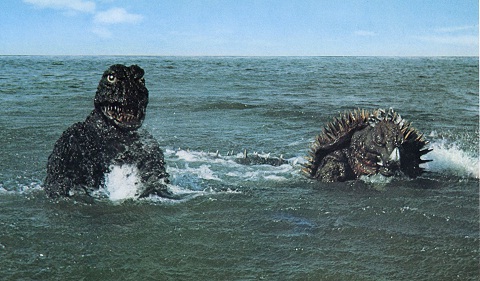








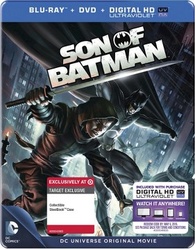
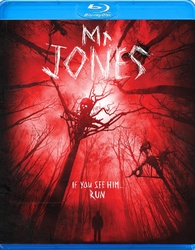
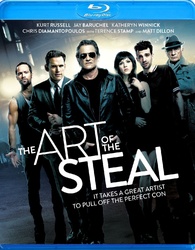
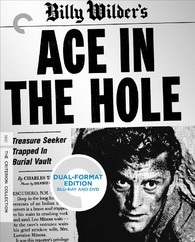
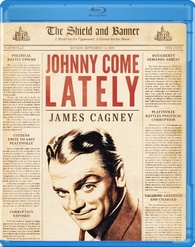
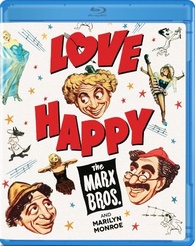

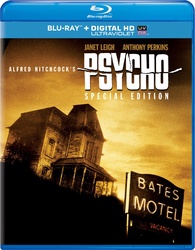
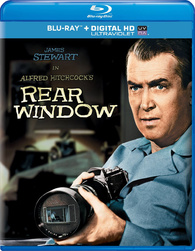
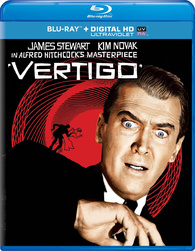
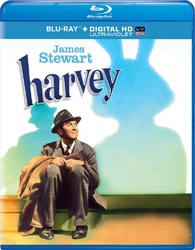



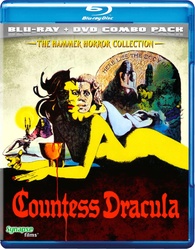
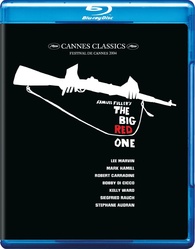

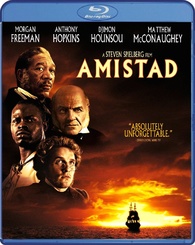

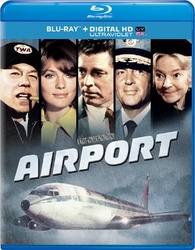
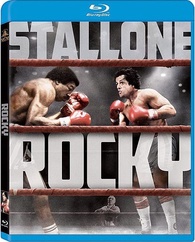
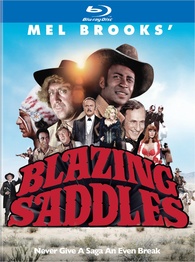
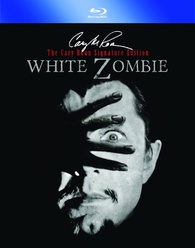
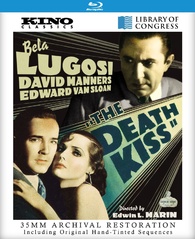
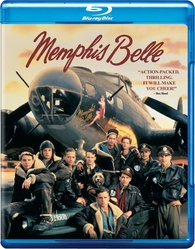
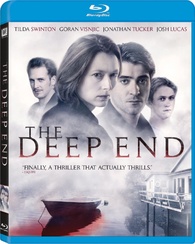




One Comment